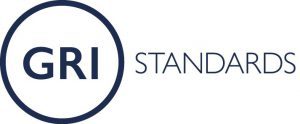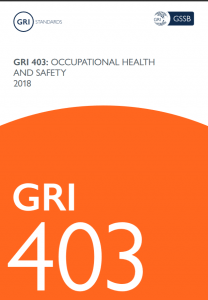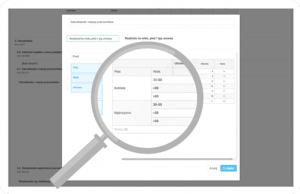Carbon footprint data collection with Diaphane
June 21, 2018First non-financial report of our client
July 24, 2018GRI announced a new version of indicators in the field of OHS and water stewardship at the end of June, a few days before GRI STANDARDS, which replaces G4, became effective.
 This is the first update of the 2016 STANDARDS version. The years 2016-18 were a transition period – it was still possible to report in accordance with the G4, but STANDARDS was also available (although not required).
This is the first update of the 2016 STANDARDS version. The years 2016-18 were a transition period – it was still possible to report in accordance with the G4, but STANDARDS was also available (although not required).
In the same way, GRI is encouraging the reporting organizations to use the 2018 version which will fully replace the 2016 original in 2021.Nevertheless, GRI writes:
“This Standard is effective for reports or other materials published on/after 1 January 2021. Earlier adoption is encouraged.”
Under review
In accordance with due process, GSSB (the Global Sustainability Standards Board) – as GRI’s independent standard-setting body – has selected experts deliberated and recommended updates in 2017-2018. The members of Project Working Groups represent diverse, multi-stakeholder backgrounds, bringing a combination of relevant knowledge and experience.
In the future, we can expect further issues to be consulted within working groups coordinated by the international GRI community.
What changed?
In the case of OHS, the Standard has been revised to focus on the presence of robust occupational health and safety management systems, and the processes and programs that prevent harm and promote worker health.
THE UPDATED 403 STANDARD:
-
the range of indicators expanded significantly – from 4 to 10;
-
covers the full spectrum of workers for whose occupational health and safety the organization is expected to be responsible (e.g., control of work and workplace);
-
includes methodologies for measuring and reporting work-related injuries and ill health – thereby enhancing the quality and comparability of this information;
-
helps measure impacts on the health of workers as opposed to measuring the loss of productivity for the organization – the emphasis is thus on recovery time for the worker.
The number of water-related indicators increased from 3 to 5, however, the biggest change is the introduction of tables that can be used by the reporting entity as a template to present data.

THE UPDATED 303 STANDARD:
-
requires more detail on reporting water discharge information – including the quality of water discharges, substances of concern present in effluent, and the approach to setting the minimum standards for the quality of effluent discharges;
-
includes a new disclosure for water consumption, to help measure water that is not returned back to the environment;
-
introduces requirements to report impacts across the full value chain, to encourage companies to start measuring this data and managing impacts.
Flexibility
The development of the new version proves that non-financial reporting is alive – as an element of communication – and constantly changing to respond to the greatest extent to the expectations of the market.
This is how we think about Diaphane Software as well – as a tool that is flexible and can be adapted to both the changing versions of the guidelines and the specificity of the organization that monitors and discloses ESG data.
At Diaphane, the new version will be available as an alternative to the 2016 version currently in force – required from 1 July 2018, fully replacing G4
Are you one of environmental and socially responsible companies?
We will help you to create an effective data collection process and choose the scope of reported indicators and the way content is presented.
How? By combining CSR advisory competences from the ESG area with the skills in creating intuitive IT tools for business.



